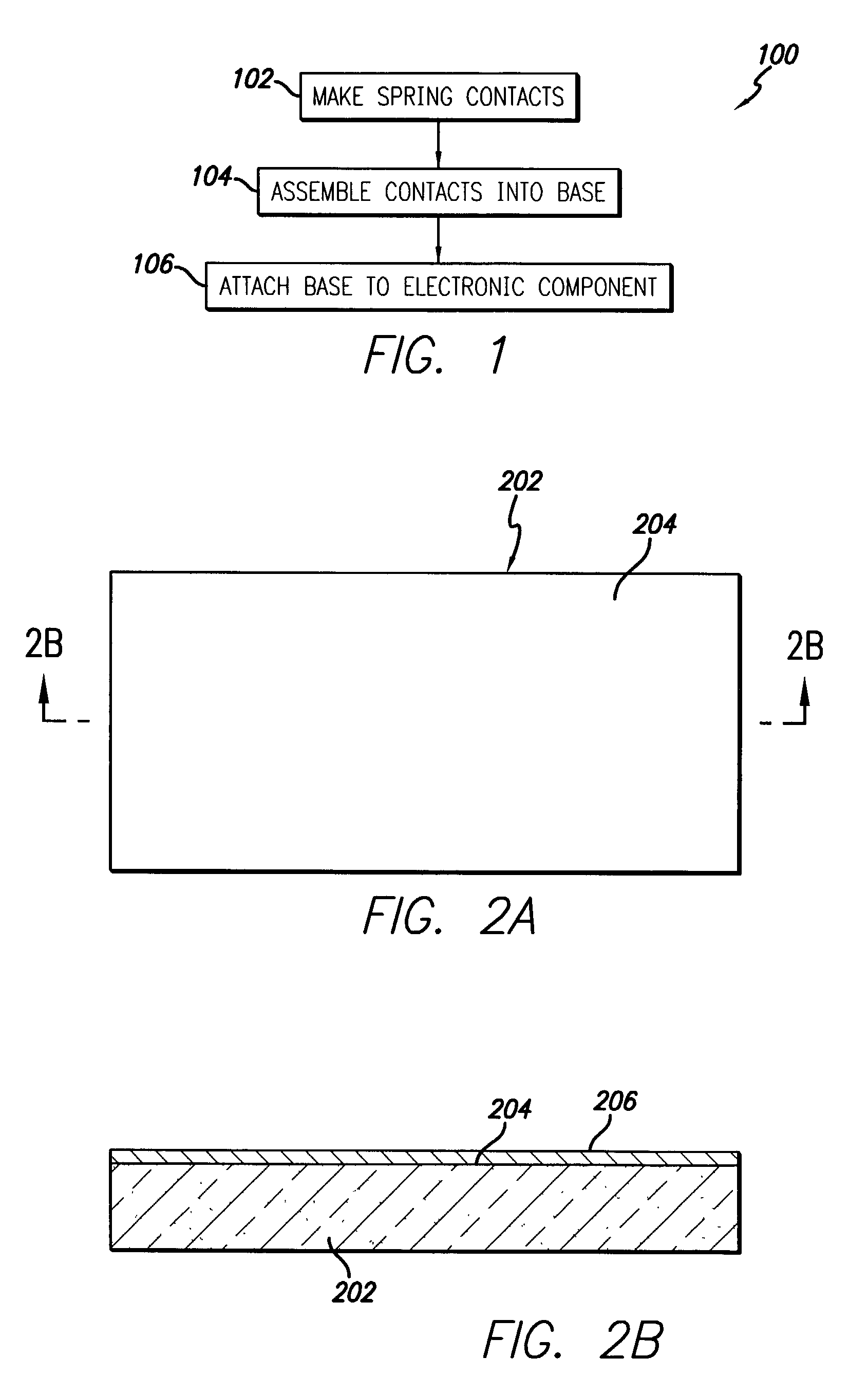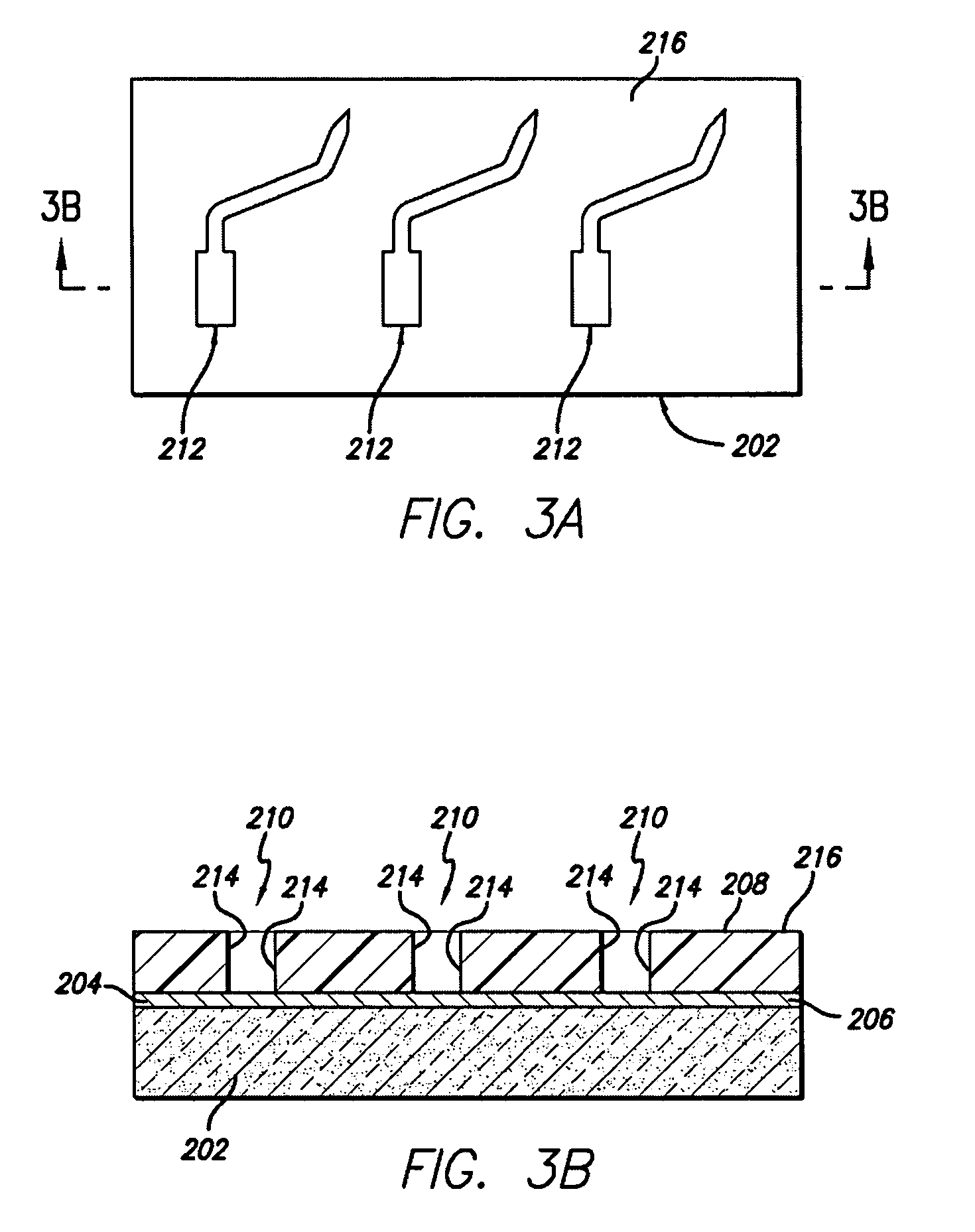Method of making microelectronic spring contact array
a technology of spring contact array and spring contact, which is applied in the direction of individual semiconductor device testing, semiconductor/solid-state device testing/measurement, instruments, etc., can solve the problems of slowing down the process of making an array, limiting the use of tungsten wire and like components, and limited contact arrays with relatively few contacts
- Summary
- Abstract
- Description
- Claims
- Application Information
AI Technical Summary
Benefits of technology
Problems solved by technology
Method used
Image
Examples
Embodiment Construction
[0032]The present invention provides a method of making a microelectronic spring contact array that overcomes the limitations of prior art methods. In the detailed description that follows, like element numerals are used to indicate like elements appearing in one or more of the figures.
[0033]Spring contacts arrays made using a method according to the invention may be especially suitable for contacting very compact semiconductor devices, such as, for example, devices with terminals arranged at a pitch (average array spacing) of less than 5 mils (about 130 μm). The invention is also suitable for producing wiping-type spring contacts having elongated beams, for example, beams with an aspect ratio (ratio of length to width) of 3 or greater, and more typically, 10 or greater. The method may be used to produce straight or contoured beams having very precise dimensions and performance characteristics. While the method is especially suitable for making these types of spring contacts, it may...
PUM
| Property | Measurement | Unit |
|---|---|---|
| Thickness | aaaaa | aaaaa |
| Electrical conductivity | aaaaa | aaaaa |
| Structure | aaaaa | aaaaa |
Abstract
Description
Claims
Application Information
 Login to View More
Login to View More - R&D
- Intellectual Property
- Life Sciences
- Materials
- Tech Scout
- Unparalleled Data Quality
- Higher Quality Content
- 60% Fewer Hallucinations
Browse by: Latest US Patents, China's latest patents, Technical Efficacy Thesaurus, Application Domain, Technology Topic, Popular Technical Reports.
© 2025 PatSnap. All rights reserved.Legal|Privacy policy|Modern Slavery Act Transparency Statement|Sitemap|About US| Contact US: help@patsnap.com



